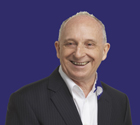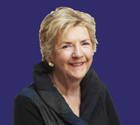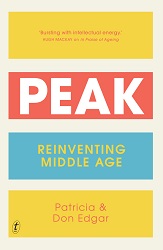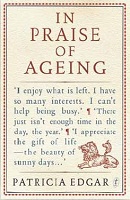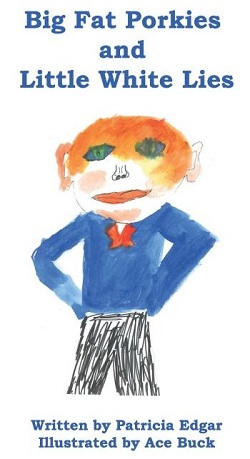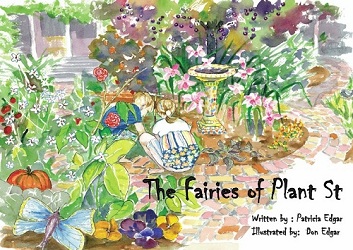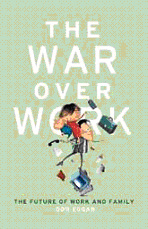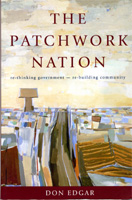Are we all mad or are we being driven mad?
DON EDGAR and PATRICIA EDGAR.
April 2021
On any evening watching television you will be warned about the content you are about to view and then advised who to call because you inflicted it upon yourself. ?Who is responding to what must be an increasing demand in calls for help? They cannot possibly all be qualified experts in the complex field of 'mental health'? The Diagnostic and Statistical Manual of Mental Disorders (DSM 5), which finds widespread use in Australia and across the world, by physicians, researchers, courts, and schools, lists more than 300 criteria for depression, which makes the meaning of a diagnosis so vague it can potentially cover every one of us. So, are we more depressed or more diagnosed?
Psychiatry's history is fraught, as evidenced by Jerome Groopman (The New Yorker, May 27, 2019). In the late nineteenth century, asylums were overflowing with patients. A causal relationship with syphilis was established in 1879. Meanwhile Freud came up with the idea that nearly all neuroses arose from repressed 'sexual impressions', and confessional healing grew in demand. At that time there was a growing split between the biological camp and the psychoanalytical camp with theories that microbes in the intestine, mouth or sinuses could release toxins that impaired brain functions. Treatments for schizophrenia included removing teeth, appendixes, ovaries, testes, colons and more. By mid-century, the lobotomy became a practice in mental hospitals.
Then in the sixties we entered the age of anxiety, and emotional security in early childhood came heavily into focus. Mothers could be blamed for every troubled child. If you were over-protective you would stunt development; if you were permissive, you could be adding to the potential crime rate, and if you were cold, you could be creating a homosexual. It was not until 1973 that homosexuality was removed from the DSM as a disorder.
At the same time sociologists were arguing distress and anxiety resulted from the vagaries of life - we were disabled by living. Academics challenged the legitimacy of psychiatry and forced the examination of what constituted mental illness.
But in 1954, a drug called Thorazine was approved as a treatment for mental disorder and the pharmaceutical industry swung into action. By 1964 fifty million prescriptions had been filled. Next came sedatives, and within a year Valium became the most-commonly prescribed drug in America, where it remained for the next twenty years. Then came Prozac and other SSRIs. Mass market prescription-driven psychiatry flourished, with doctors the target of sophisticated marketing campaigns. Pills provided a simple answer for problems that could not be solved with a fifteen-minute consultation. Patricia dealt with one psychiatrist when she lost her voice in the 1970s who dispensed drugs like smarties direct from his drawer. She complained, but it was 25 years before that man was publicly exposed in a special investigation by 7News which motivated more than 100 complaints about over- medicating abuse of patients. He died with an AO.
It is essential the links between advocates of the mental health industry and major drug companies are transparent and that the companies' marketing methods are called into question.
But with all the brouhaha about mental health, no one has been able to produce definitive experimental proof establishing neuro-chemical imbalances as the pathogenesis of mental illness. Clinical trials have stirred up controversy about whether anti-depressants outperform placebos. ?And research has shown words can provide greater palliation than drugs. For better or for worse, words can change the chemical transmitters and circuits of our brain.
Victoria's Royal Commission into Mental Health Report (2021) does not provide a proper assessment of the evidence on the efficacy of proposed treatments. Its chief supporter, the ubiquitous Professor Patrick McGorry, claims the system is broken down: his solution is more money to fund his own centres. Yet a University of NSW 2016 study of the 'Headspace' program for youth mental health services found, it provided only a 'small' benefit, with just a third of clients significantly improved, 51 per cent showing no change, and the wellbeing of one in every ten patients going 'backwards.' The Citizens Commission on Human rights (CCHR) which is the international mental health watchdog, calls Headspace 'a $37.5 million gigantic experimental lab'. Professor McGorry's claim that pre-drugging adolescents with anti-psychotics could 'prevent' mental illness was debunked, and some of the drugs used were found to exacerbate suicidal tendencies. Professor Ian Hickie, McGorry's NSW counterpart, asserts that a critical eye needs to be applied to what is actually being done.
The current 'truths' are that one in every five Australians has a mental disorder, that mental health problems are on the increase, costing the economy billions of dollars, and that a few chosen mental health experts have the solutions, if only their services were better funded. The one-in-five figure comes from the ABS National Survey of Mental Health & Wellbeing, in 2007 which found that, at some point over a lifetime, 47% of the Australians surveyed had had something labelled a 'mental disorder', and one in five had a '12-month disorder' of some kind. That 1 in 5 category, included a substance abuse problem (5.1% drugs and alcohol), an 'anxiety disorder' (14.4% overall, including post-traumatic stress, agoraphobia, 'generalised anxiety', 'social phobia' and obsessive-compulsive disorder). Another 6.2% had an 'affective disorder', including 'a depressive episode' and 'bipolar disorder'. That is a very mixed bag raising definitional problems.
The survey also found (using the Kessler Distress Scale) that lifestyle factors such as obesity, lack of exercise, disability, and lack of contact with friends to rely on, are linked to so-called mental health problems. The unemployed are particularly vulnerable (29%) and substance abuse is four times higher for those not married. In other words, much of the stress, anxiety, and depression we were suffering from in 2007, arose from social causes and situations, not from some underlying 'mental health' defect.
The evidence that common mental health disorders have increased over the years is also unclear. A 2017 study found no change in the rates between 2001-2014. Yet, there was a 50% increase in those receiving disability support pensions on grounds of mental illness, with 'depression' becoming the fourth highest 'cause' of disability in Australia. The 2014-15 ABS National Health Survey reported some 15% had co-existing long-term mental or behavioural conditions, with links to unemployment, disadvantage, lower educational attainment and lone-person status - all social conditions unlikely to be affected by counselling or drug treatments. ?
The Productivity Commission Report on mental health (2020) also found mental illness is associated with poor housing, lack of access to services in rural areas, family breakdown, unemployment, lower education, and poor health, but they dodged the challenge by saying such risk factors - such entrenched social, economic, and environmental challenges - lay beyond its remit.
The same report recommends screening 0-3-year-olds, and pre-schoolers for their 'emotional development', a process already carried out through the AEDI (Australian Early Index Census), which in 2018 found one in five children were 'developmentally vulnerable in one or more domains'. ?Human rights advocates fear the term is being made synonymous with 'mental illness' and will lead to unnecessary medication of young children across Australia. Is little Tracey, for example, throwing tantrums, not sleeping, demanding her own way, or clinging to mum, because she is mentally disordered or yet to learn self-control and respect for others? Are 'untruths' being pushed at parents of young children who need better guidance and support in bringing up their children in a healthy and positive manner?
The report found prescribing of anti-depressant drugs has doubled, and the cost of 'depression' was estimated to be $12.6 billion. There is a rise in rates of 'ADHD' and 'autism' which also have definitional, diagnostic complexity. And the aged are in line, with doctors over-prescribing anti-depression pills as a way of blocking out the misery of declining physical health and making them easier to manage in institutions.
Say something often enough - 'one in five have a mental illness' or 'suffer from anxiety and depression' - and the belief takes hold - like Trump's fake news, it becomes insidious. Government money may flow to those making the most noise, but most of the real underlying causes of distress and anxiety in society go begging. We are not dismissing what has become an important social problem; social stress does seem to be on the rise, particularly because of COVID-19, but the debate has become very confusing and divisive. It is hard to know any more if we are having a bad month because we got sacked, diagnosed with cancer, lost a friend, have insomnia or are mentally ill.
It is important to recognize, as on-going research has revealed, mental illnesses do not exist apart from and unaffected by professional and public beliefs and the cultural currents of the times we live in. But the 'solutions' being proposed are not social, they are more 'services' such as counselling, giving drugs, or some form of psychotherapy. The real 'truth' is that the mental health lobby has more labels than solutions. There is lack of evidence about the efficacy of treatments and the media is helping spread panic to gullible politicians who nowadays seem incapable of meeting challenges and owning solutions.
